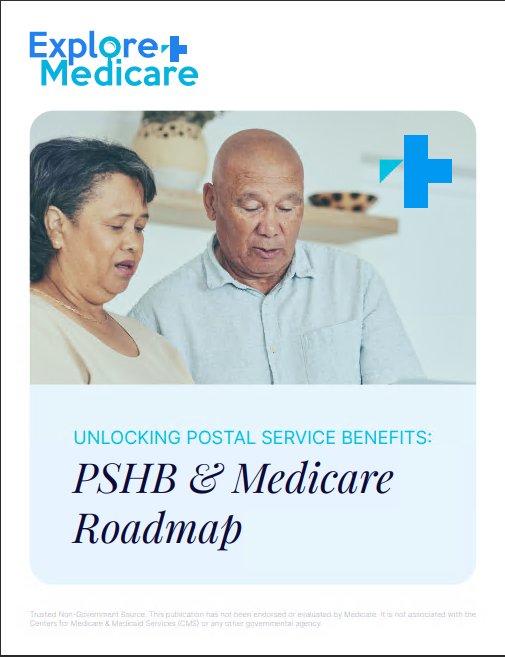Key Takeaways:
-
Understanding Medicare doesn’t have to be overwhelming; it’s about knowing where to look and focusing on what’s relevant to you.
-
Learning the basics and accessing trusted resources can simplify your Medicare experience, helping you make informed decisions.
Cut Through the Medicare Noise
Let’s face it: Medicare can feel like a maze. With different parts, plans, and enrollment periods, it’s easy to feel lost. But here’s the good news—you don’t have to tackle it all at once. By breaking down Medicare into manageable pieces and knowing where to look for clear answers, you can feel confident about your choices.
Start with the Basics
What Is Medicare, Really?
Medicare is a federal health insurance program primarily for people aged 65 and older, although younger individuals with disabilities or certain medical conditions can also qualify. It consists of four parts:
-
Part A: Covers hospital stays, skilled nursing care, and some home health services.
-
Part B: Focuses on outpatient care like doctor visits, preventive services, and medical supplies.
-
Part C: Also known as Medicare Advantage, these are plans offered by private insurers that bundle Parts A and B and often include extras.
-
Part D: Helps cover the cost of prescription drugs.
When to Enroll
For most, the Initial Enrollment Period (IEP) is the first chance to sign up. It spans seven months—three months before your 65th birthday, your birth month, and three months after. Missing this window could mean penalties, so mark your calendar!
Where to Turn for Trusted Information
Official Medicare Resources
Start with the official Medicare website or call the Medicare helpline. These resources provide accurate, up-to-date information on enrollment, coverage, and costs. Their goal is to guide you, not sell you anything.
Local Support Options
If you prefer speaking to someone in person, look into your State Health Insurance Assistance Program (SHIP). SHIP counselors offer free, unbiased guidance tailored to your state’s Medicare options.
Printed Materials
For those who like a hands-on approach, the annual “Medicare & You” handbook is a solid choice. Mailed to all Medicare beneficiaries, it’s packed with detailed, reliable information.
Avoid Information Overload
Stay Organized
Jot down your questions before diving into research. Are you curious about specific coverage details? Costs? Enrollment deadlines? Focusing on your priorities helps cut through the clutter.
Use Simple Tools
Medicare’s Plan Finder is an excellent tool to compare options. It’s user-friendly and helps you evaluate plans based on your needs, from prescriptions to provider preferences.
Understand Costs Without Getting Bogged Down
General Cost Breakdown
-
Part A: Typically free if you’ve worked at least 10 years, but there are deductibles.
-
Part B: Standard premium in 2025 is $185 per month, with an annual deductible of $257.
-
Part D: Premiums and deductibles vary but are capped, with the deductible reaching up to $590 this year.
Be Mindful of Penalties
Missing your Initial Enrollment Period could mean lifelong premium penalties. For Part B, this could add 10% for each year you delay, while Part D penalties are calculated monthly.
Learn to Navigate Enrollment Periods
Key Timeframes
-
Initial Enrollment Period: Your first chance to join Medicare.
-
General Enrollment Period: Runs annually from January 1 to March 31, with coverage starting in July.
-
Open Enrollment Period: From October 15 to December 7, you can review and change plans for the upcoming year.
-
Special Enrollment Periods: Triggered by life events like losing employer coverage or moving to a new area.
Simplify Decision-Making
Focus on Your Needs
Before choosing a plan, consider your priorities. Are you looking for specific prescription drug coverage? Do you want access to a wide network of doctors? Knowing what’s important to you will make narrowing your options easier.
Avoid Paralysis by Analysis
You don’t need to understand every Medicare rule. Stick to the basics: your health needs, budget, and what’s available in your area. If you’re unsure, consult an expert rather than trying to figure everything out alone.
Take Advantage of Additional Support
Talk to Your Doctor
Your healthcare provider is a valuable resource when it comes to understanding your medical needs and how they align with Medicare’s coverage options.
Connect with Trusted Advisors
Insurance agents specializing in Medicare can help clarify your choices. Just ensure they’re unbiased and focused on what works for you, not on commissions.
Use Online Tools
Beyond Medicare’s official resources, several websites offer plan comparisons and cost calculators. Stick to sites that don’t require you to share personal details unless absolutely necessary.
Build Confidence in Your Medicare Knowledge
Take Small Steps
Start by learning about one Medicare part at a time. Once you’ve mastered Part A, move on to Parts B, C, and D. Breaking it down reduces stress and builds your confidence.
Stay Updated
Medicare rules and costs change yearly, so it’s important to stay informed. Review updates each fall during the Annual Notice of Change period, so you’re ready for Open Enrollment.
What to Keep in Mind as You Explore
-
Medicare isn’t one-size-fits-all, so take time to review your options.
-
Seek out resources designed to educate, not sell.
-
If something feels overwhelming, pause and return to it later. Clarity often comes with a fresh perspective.
Empower Your Medicare Journey
Navigating Medicare doesn’t have to be daunting. By focusing on trusted resources, asking the right questions, and prioritizing your health and budget, you can make informed choices without feeling overwhelmed.









